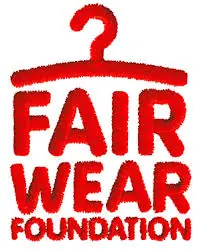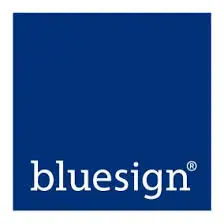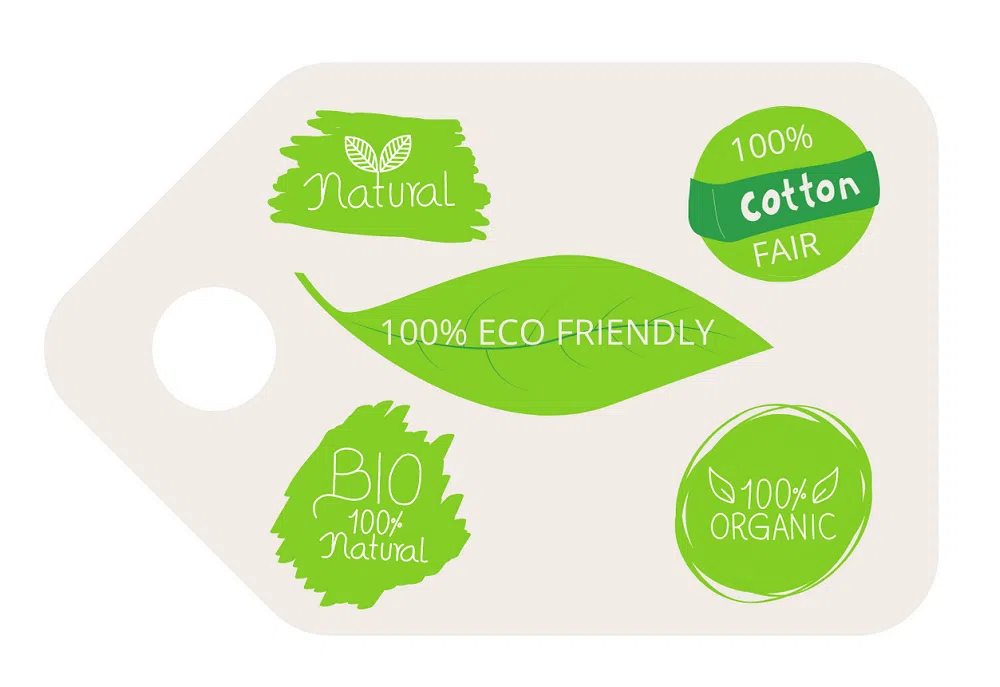Our story
The Babbily guide to organic clothing. (Spoiler: it’s not as simple as you might think.)
We all want to protect our children from the negative impact of chemicals. That’s only natural. And parents are increasingly looking to buy organic clothing for their children. As a result, more and more small and mainstream brands are jumping on the organic and sustainable bandwagon to meet rising demand.
But what does “organic” actually mean for you?
No chemicals in your clothes? Higher quality standards? Sustainable production and fair conditions for workers? All of these things?
As always, there is no black and white answer. Fashion supply chains are so complex that no brand can really claim to be 100% organic and sustainable. Along with “organic” a new word has entered our vocabulary – “greenwashing”. Essentially, this is when brands pretend to be more environmentally friendly than they actually are. As a result, we find it more and more difficult to trust carefully phrased sustainability claims and find really trustworthy sustainable brands.
The good news, though, is that there are some certification programmes that guarantee at least some parts of the production process are sustainable. We can all look for these signs and use our common sense to check where and how garments have been produced. Small changes in buying habits make a big difference for our environment. And for our children’s futures.
There are literally dozens of initiatives that prioritise the environment and workers protection. Here are just a few of the labels you’re likely to see most often.
To compile this little guide I’ve used the original sources as well as expert reviews from Greenpeace, the Clean Clothes Campaign and the Kampagne für saubere Kleidung.
Most trustworthy certificates for organic and sustainable textiles
Textiles processing and manufacturing
 GOTS (Global Organic Textile Standard) certification covers the most important aspects of the textile chain:
GOTS (Global Organic Textile Standard) certification covers the most important aspects of the textile chain:
-
-
-
- environmentally friendly production (but no clear criteria for wastewater test on production sites),
- improved conditions for workers,
- use of organic fibres (up to 30% of recycled synthetic fibres is allowed),
- and no hazardous substances (9 out 11 prohibited chemicals in finished products).
-
-
The database on the website is unfortunately not very user friendly and doesn’t include many small independent brands, that use GOTS certified organic cotton in their clothing production. The good news is that more and more brands favour this certificate. Every time you see this label on clothing you can be sure fabrics were produced with respect to the environment and workers.
(PS Babbily uses GOTS-certified fabrics wherever possible.)
 IVN Best – Naturtextil The strongest certification on the market, covering the whole textile chain from raw materials processing through to the final product.
IVN Best – Naturtextil The strongest certification on the market, covering the whole textile chain from raw materials processing through to the final product.
-
-
-
- 100% of fibre content must be of certified organic origin;
- a wide range of chemicals prohibited in all processing stages;
- compliance with national and local legal environmental requirements;
- environmental procedures for monitoring and improvement purposes;
- strict waste and wastewater regulations;
- regulations on packaging of organic products;
- social criteria apply to all processing and manufacturing stages.
-
-
There are almost 100 companies (textile manufacturers and clothing retails), majority in Germany, that have been awarded this certification.
Clothing manufacturing
 Umweltzeichen (The Austrian Ecolabel) Certifies a wide range of products in household, building, and tourism and hospitality industry. Its main focus in textiles is on shoe manufacturing – from use of hazardous substances in raw materials processing through to production and finishing stages, including social criteria.
Umweltzeichen (The Austrian Ecolabel) Certifies a wide range of products in household, building, and tourism and hospitality industry. Its main focus in textiles is on shoe manufacturing – from use of hazardous substances in raw materials processing through to production and finishing stages, including social criteria.
Unfortunately, this certification is not widely present on the textile market. Only two shoe brands in Austria have been awarded this certification so far.
 Fair Wear Foundation Independent international programme focusing on improving workers’ conditions in garment manufacturing. It doesn’t certify individual garments or products, but works with companies, pushing for living wages for workers and promoting better working conditions.
Fair Wear Foundation Independent international programme focusing on improving workers’ conditions in garment manufacturing. It doesn’t certify individual garments or products, but works with companies, pushing for living wages for workers and promoting better working conditions.
Use these once with caution
 Bluesign Certifcate. Certifies a wide range of textiles from natural through to man-made fibres with a focus on use of chemicals. Hundreds of chemicals are prohibited at all production stages. No criteria for wastewater tests. Many chemicals end up in the final product. Social criteria are not on the checklist.
Bluesign Certifcate. Certifies a wide range of textiles from natural through to man-made fibres with a focus on use of chemicals. Hundreds of chemicals are prohibited at all production stages. No criteria for wastewater tests. Many chemicals end up in the final product. Social criteria are not on the checklist.
I haven’t found publicly available data on exact criteria for Bluesign certification, including chemicals and wastewater treatment. Website is dominated by general marketing statements, so I had to use Greenpeace assessment of certification.
 OEKO-TEX Confidence in textiles. Not an organic certification. It means the garment has been checked for substances harmful to human health. Environment and working conditions are not on the checklist.
OEKO-TEX Confidence in textiles. Not an organic certification. It means the garment has been checked for substances harmful to human health. Environment and working conditions are not on the checklist.
![]() BCI (Better Cotton Initiative) Minimised use of pesticides and water resources. Cotton certified to BCI standards is not necessarily of organic origin, producers don’t necessarily get a better price for their product and there is no guarantee for better working conditions or wages.
BCI (Better Cotton Initiative) Minimised use of pesticides and water resources. Cotton certified to BCI standards is not necessarily of organic origin, producers don’t necessarily get a better price for their product and there is no guarantee for better working conditions or wages.
 Organic 100 Cotton Standard and Organic Blended Standard is a standard of tracking and verifying the content of organically grown materials in a final product. It tracks the flow of row material from the source to the final product, but doesn’t cover certification of the raw material itself. Organic 100 Cotton Standard certifies origin of fibres and raw materials and use of 95-100% certified organic cotton in a product. Organic Blended Standard is used for products that contain 5-95% organical material (there are no restrictions on the remaining content). Certification Doesn’t regulate use of chemicals throughout production stages and doesn’t guarantee social and working conditions.
Organic 100 Cotton Standard and Organic Blended Standard is a standard of tracking and verifying the content of organically grown materials in a final product. It tracks the flow of row material from the source to the final product, but doesn’t cover certification of the raw material itself. Organic 100 Cotton Standard certifies origin of fibres and raw materials and use of 95-100% certified organic cotton in a product. Organic Blended Standard is used for products that contain 5-95% organical material (there are no restrictions on the remaining content). Certification Doesn’t regulate use of chemicals throughout production stages and doesn’t guarantee social and working conditions.
Clothing brands’ own sustainability initiatives
Some high street fashion brands have developed their own sustainability or organic initiatives. However, the lack of independent certification makes it difficult to identify with certainty the real positive social and environmental impact of such initiatives. A few examples here: Conscious Collection (H&M), Wear the change (C&A), Join Life (Zara), Committed Collection (Mango), Gut Gemacht (Tschibo) etc.
Also into this category fall descriptions and labels that are designed to look like certifications, such as:
“Made from organic cotton” (without certification or with a pretty green looking logo). Doesn’t guarantee anything, except feeling better about buying organic – there’s no guarantee of chemical-free production, better working conditions or indeed organic content of a garment.
“Made with organic yarn/fibres” (fibres can be GOTS certified). Means the same as ☝️. The rest of the process (spinning, dying, fabric production, garment production etc.) is done in a conventional way.
Finally, there’s one very well-known certification I still haven’t made my mind up about:
 Fairtrade certification. This is a tricky one. The idea of paying a higher price to members of cooperatives is great, but numerous research papers have questioned the benefits to producers involved in Fairtrade schemes. Producers end up paying more in membership and certification fees, which eliminates an effect of higher prices they get for they product. The pricing economics have also been questioned. Overall there is no proven positive effect on communities. What it does guarantee, though, is a higher mark up on the end product. Plus you’ll feel better about buying it (thanks to clever marketing).
Fairtrade certification. This is a tricky one. The idea of paying a higher price to members of cooperatives is great, but numerous research papers have questioned the benefits to producers involved in Fairtrade schemes. Producers end up paying more in membership and certification fees, which eliminates an effect of higher prices they get for they product. The pricing economics have also been questioned. Overall there is no proven positive effect on communities. What it does guarantee, though, is a higher mark up on the end product. Plus you’ll feel better about buying it (thanks to clever marketing).
Conclusions
- There are dozens of sustainable textile certification programmes on the market, which is a good thing. That means businesses (big and small) are making steps to improve their production and manufacturing practices.
- Clothing production has a very complex supplier and logistics chain, which is extremely difficult to track. You will be pressed hard to find a 100% sustainable brand.
- There are private and commercial initiatives and certification programmes, that are designed to look “green” for consumers, but make little difference for environment or workers exploitation practices.
- You don’t need to know by heart all the certification programmes. If you choose a few independent trustworthy textile certification labels, combine it with a check where an item has been produced, you will already make a big difference. Most likely you will end up with a few independent clothing labels, as this is where genuine change is happening. Vote with your wallet, not words or intentions, and together we will change future for our children.


